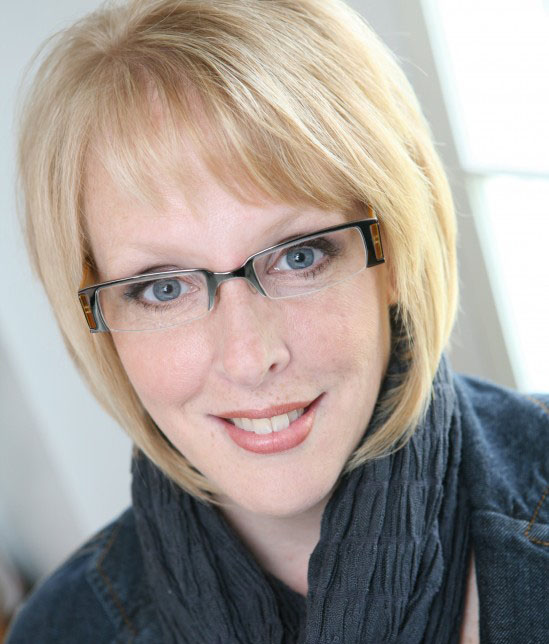
by Kim McCloskey | Aug 28, 2018 | About Storytelling
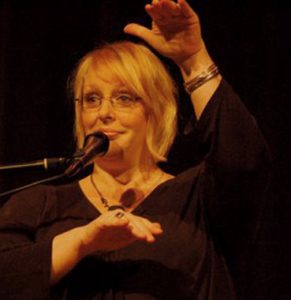 Kim Weitkamp is a crowd favorite at the Timpanogos Storytelling Festival for good reason. She peppers her stories with humor, tall tales, music, and wisdom. Not only is Kim an award winning storyteller, author, and speaker, but she also owns a design company, a record label, and has been involved in humanitarian work for the old and young alike. Talk about a busy woman! Well, we certainly appreciate Kim for taking the time to answer a few questions and guide us along her pathway to story.
Kim Weitkamp is a crowd favorite at the Timpanogos Storytelling Festival for good reason. She peppers her stories with humor, tall tales, music, and wisdom. Not only is Kim an award winning storyteller, author, and speaker, but she also owns a design company, a record label, and has been involved in humanitarian work for the old and young alike. Talk about a busy woman! Well, we certainly appreciate Kim for taking the time to answer a few questions and guide us along her pathway to story.
1. Our theme this year is “Pathways to Story.” How would you describe your pathway to becoming a storyteller? Was it a road, a back alley, a fast track, or a meandering trail?
To the general observer it probably looked fast because in the world of storytelling at festivals, it came to me pretty quick (but with a ton of work), but I had been moving and working with storytelling for years before I entered the festival circuit. I used applied storytelling in my work as a non-profit director and in my work with youth.
2. Could you tell us about someone who has influenced you on this journey as a storyteller?I experienced some pretty magical moments with Megan Hicks, Jay Callahan and David Novak. They were some of the first professional storytellers I ever saw. But my roots are deep in the soil of the books I read as a kid. I had a fairy tale collection book from Readers Digest and I am not kidding when I say I wore the binding out.3. What are you passionate about outside of storytelling?
Using story to heal and bring people together, strengthening families/communities or making creating a new community. I own a maker-space and yarn shop called The Makery. I opened it not just because of my love of handmade things, but also to carve out a corner where people feel loved and safe and where stories can be shared while we sit side by side creating. It is a very, very powerful thing and it has been more rewarding than what I had imagined.
4. Where does storytelling go from here? How do you see its influence on society?
Stories have been influencing story since the first hieroglyphics were scratched onto a cave wall. The vehicle that story uses and/or the way stories are shared may change on and off, but humans will never stop sharing stories face to face. State of the art will never replace state of the heart. It is too much a part of who we are as humans. There is a huge buzz in business about storytelling and it is creating awareness at many levels to the power of story. I am grateful for that. I think there will be an ongoing cycle where a revival of storytelling rises up and then ebbs and then rises again. It is the basic circle of us always coming back to our roots. But hey, what do I know.
5. What fictional place would you most like to visit?
The Shire.
***************************************************************************************************
Thanks, Kim, for taking the time to answer our questions. Don’t miss her at the 2018 Timpanogos Storytelling Festival on September 6-8 at the Ashton Gardens at Thanksgiving Point in Lehi, UT. Purchase your tickets at timpfest.org.
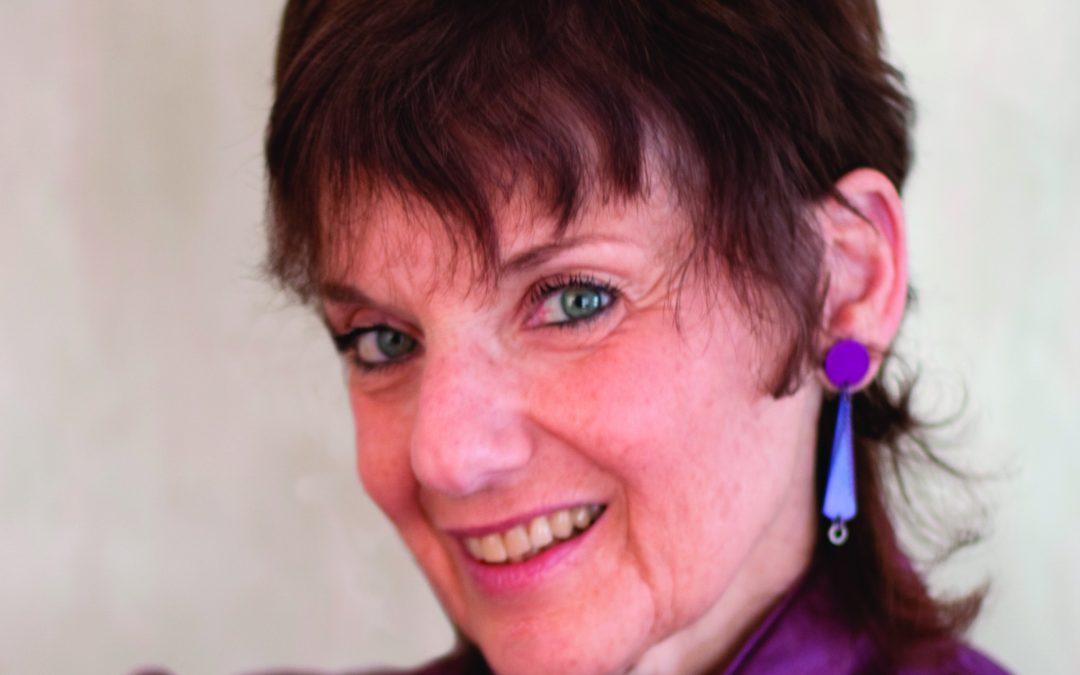
by Kim McCloskey | Aug 27, 2018 | About Storytelling
To listen to Corinn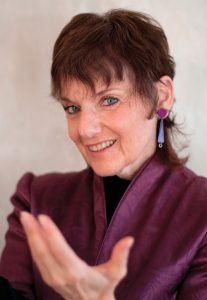 e Stavish is to walk with her along the path of carefully curated stories from the boroughs of New York City to her life in the midwest. As a fellow traveller I am reminded of my own journey and the beautiful people who have helped me along the way. Her biblical tales transport me along another path of introspection and growth. Corinne is a gifted performer and teacher, so we are excited that she will be one of our featured tellers at this year’s Timpanogos Storytelling Festival. We asked her if she would share her pathway to story with us.
e Stavish is to walk with her along the path of carefully curated stories from the boroughs of New York City to her life in the midwest. As a fellow traveller I am reminded of my own journey and the beautiful people who have helped me along the way. Her biblical tales transport me along another path of introspection and growth. Corinne is a gifted performer and teacher, so we are excited that she will be one of our featured tellers at this year’s Timpanogos Storytelling Festival. We asked her if she would share her pathway to story with us.
Our theme this year is “Pathways to Story.” How would you describe your pathway to becoming a storyteller? Was it a road, a back alley, a fast track, or a meandering trail?
My storytelling path was jagged and winding, without a steady course for many years. I had been a double major in Theatre and English in college and was a high school English and Drama teacher in Chicago. I heard my first storyteller in my synagogue in Evanston, IL and realized it was the perfect marriage of my passions. It took a few years to get started, but when I did, the road straightened; the destination became clear.
Could you tell us about someone who has influenced you on this journey as a storyteller?
Robin Goldberg was the storyteller I heard that transformative evening at my synagogue. I attended a couple of her workshops and then began to look for more opportunities to hear storytellers. It took another decade for me to attend my first storytelling festival in Jonesborough, where I lost my breath and speech…temporarily.
What are you passionate about outside of storytelling?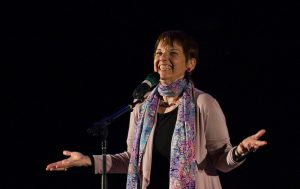
My greatest passion is traveling with my kids. I love to see the world through their eyes and experiences. I’m passionate about theatre and subscribe to a few play series. My fondest trips have been to the Shakespeare Festival in Stratford, Ontario and NYC for theatre with my kids.
Where does storytelling go from here? How do you see its influence on society?
Hopefully, storytelling will continue to be a community experience where we share our human similarities and learn about our differences. Storytelling cannot “save the world,” but our stories can add to its grace and wisdom.
What fictional place would you most like to visit?
I’d like to hang out on a raft with Huck and Jim.
***************************************************************************************************
To find your own pathway to story come and be transported with Corinne at the 2018 Timpanogos Storytelling Festival on September 6-8 at the Ashton Gardens at Thanksgiving Point in Lehi, Utah. Tickets are available at timpfest.org.
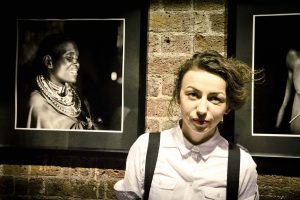
by Kim McCloskey | Aug 19, 2018 | About Storytelling, Featured
 Timpanogos Storytelling Festival is lucky enough to welcome back Clare Murphy, a self-described storyteller, performer, writer, dramaturg, curiosist, teacher, consultant, wanderer, wonderer and maker who has performed around the world. Her lilting Irish accent will remind you that her roots are from a country with one of the richest folktale traditions in the world. I was enchanted by Clare when she came to our festival a few years back and I’ve been excited to see her again ever since. We asked Clare to share some of her insights on her pathway to story.
Timpanogos Storytelling Festival is lucky enough to welcome back Clare Murphy, a self-described storyteller, performer, writer, dramaturg, curiosist, teacher, consultant, wanderer, wonderer and maker who has performed around the world. Her lilting Irish accent will remind you that her roots are from a country with one of the richest folktale traditions in the world. I was enchanted by Clare when she came to our festival a few years back and I’ve been excited to see her again ever since. We asked Clare to share some of her insights on her pathway to story.
Our theme this year is “Pathways to Story.”How would you describe your pathway to becoming a storyteller? Was it a road, a back alley, a fast track, or a meandering trail?
It was something between a back alley, a fast track and straying from the mainpath of life.
Could you tell us about someone who has influenced you on this journey as a storyteller?
My father was an actor, on the side. He didn’t do acting fulltime as it was the 70s and he had four kids. But I saw many of his performances, and got to go backstage and meet the actors. We would help him rehearse his lines and discuss the plays afterwards. My mother is a poet. Our house was filled with books of poetry and stories. She taught me much about how to appreciate language.
I was introduced to storytelling as a world by Liz Weir. She generously invited me to her home and allowed me to shadow her for three days. She went on to encourage me throughout the years to keep going and tell me about a lot of opportunities.
I was also influenced by John Moriarty, an Irish writer and storyteller. His deep connection to myth had a profound affect on me.
What are you passionate about outside of storytelling?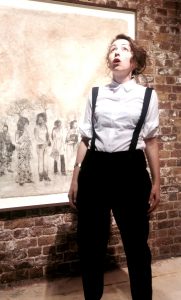
The planet and our responsibility as a part of Nature.
Kindness to each other and other species. I am passionate about art as a means of rehumanising us. I love dancing. and also chocolate, especially dark chocolate (70% + cocoa).
I love the joy of improvisation, the kindness of creativity.
Where does storytelling go from here? How do you see its influence on society?
Storytelling is exactly where it needs to be. It is in every pocket of the world. It has become a buzzword and its’ popularity is only growing. It influences society in every sphere: politics, art, climate change, education, love. People use story to support their ideologies. The hope is that the stories of love, tolerance, compassion, inclusion, kindness that bring together all human beings regardless of gender, politics or religion are the stories that will help us move forward.
What fictional place would you most like to visit?
Ursula K LeGuin’s EarthSea.
*************************************************************
Don’t miss
Clare at the 2018 Timpanogos Storytelling Festival September 6-8 at the Ashton Gardens at Thanksgiving Point in Lehi, Utah. For tickets and volunteer opportunities visit
timpfest.org.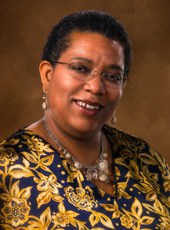
by Kim McCloskey | Aug 18, 2018 | About Storytelling
 Sheila Arnold doesn’t just tell stories; she lives them. As a professional historical character interpreter, Ms. Sheila takes on the role of historical characters and tells stories through their eyes. She has also written poems, stories, fiction, and plays, starting when she was in the seventh grade. With a life seeped in storytelling, Sheila enthralls her audience of students of all ages with her character portrayals, motivational speeches, workshops, and storytelling. You can also bet on her watching football and basketball when she has a chance to, and working with youth and reading legal mysteries are also up there on her list of interests. A woman with a wide range of talents, interests, and abilities, Sheila’s storytelling is certainly one to experience.
Sheila Arnold doesn’t just tell stories; she lives them. As a professional historical character interpreter, Ms. Sheila takes on the role of historical characters and tells stories through their eyes. She has also written poems, stories, fiction, and plays, starting when she was in the seventh grade. With a life seeped in storytelling, Sheila enthralls her audience of students of all ages with her character portrayals, motivational speeches, workshops, and storytelling. You can also bet on her watching football and basketball when she has a chance to, and working with youth and reading legal mysteries are also up there on her list of interests. A woman with a wide range of talents, interests, and abilities, Sheila’s storytelling is certainly one to experience.
We had the privilege of asking Sheila a few questions, and we have her answers for you in our interview below. We’re excited for you to get to know Ms. Sheila better before the Timpanogos Storytelling Festival begins, so without any more preamble, we present to you an inside look at Sheila Arnold.
Q&A with Sheila Arnold
Our theme this year is “Pathway to Story.” How would you describe your pathway to becoming a storyteller. Was it a road, a back alley, a fast track, or a meandering trail?
My pathway to story has been a rambling road with dead ends and no outlets, and then an autobahn. I have been telling stories since I was a kid, and was on the Forensics team and in Drama in high school and my first year of college. Then all my performance stuff stopped! I came back to storytelling when my son was in his second daycare and I was working a job that allowed me to come and tell stories at his day care facility. From there my name was given to others, I presented in each of my son’s classes, and finally arrived at Colonial Williamsburg Foundation (VA) where I became a paid storyteller in their evening programs. That is where the autobahn came. I was strongly encouraged to do more and more storytelling and in 2003 I left my full-time job to be full-time, self-employed professional storyteller. There was a bit of a storm on the road where I had to pull over in late 2003 and early 2004, but after the storm passed, it’s been wide open road. I love my job, and at each rest stop along the way, I get to meet more people, learn new things and am given new challenges for the road ahead.
Could you tell us about someone who has influenced you on this journey as a storyteller?
My son is my greatest fan, and I started everything because of him. When I left my full-time job, he was a senior in high school. I talked to him first and told him that his senior year might be seriously financially impacted, and my son looked at me and said, “Mom, this is the job you were always meant to do. We’ll be okay.” And with that love, and my parents’ love and initial financial assistance, I am doing the job I was always meant to do and the everything is okay.
In the storytelling community there are so many stories of folks who have helped, but it would be my friend, Mary Lovell from Kentucky, whose words of belief that I was a storyteller worth hearing, worth seeing on a national stage, worth having a CD made, she would be that push that led me to go further than I ever would have thought.
When I first started storytelling, I wanted to “grow up to be like” Charlotte Blake Alston, and she told me it was okay to be myself. Diane Ferlatte took me under her wing to help me know there was more to storytelling than being at festivals. In regards to my personal stories, which was not how I began storytelling: Donald Davis began the process of looking at personal stories; Milbre Burch encouraged me to express my stories better; Susan Klein helped me explore the depth of my stories, and Susan O’Halloran helped me to believe my stories needed to be told.
What are you passionate about outside of storytelling?
Faith and Justice are a focus of much of my storytelling, but also what I am passionate about outside of storytelling. My faith, as a Christian, is to grow in my relationship with God and to share the hope of Christ with others through words and mostly through action. I am also passionate about justice and speaking up and out about places where we as people, as a community, and as a country can and should be better. I love teaching parents and teachers. I am adamant about history and getting history to people, and learning from history. I am passionate about my grandson, Brooklyn, six years old and has stolen my heart away. And I LOVE to read. I am not a fast reader but I usually have 2-3 books going on at a time.
Where does storytelling go from here? How do you see it’s influence on society?
Storytelling is absolutely essential. I have seen the power of a story change the life goals of a person, awakening in them a hope or a dream that they never had. I have seen my stories allow people to grieve, to want to live, to decide they will be a part of the change in our society. I believe stories teach and inspire us, and we need so much more. I think historical storytelling needs to be happening more and more, allowing us to really hear the stories of the past.
I do think that sometimes our stories are too focused on the personal, which really only have one cultural basis and are good for a limited time, before you have to explain too much of the story because times change. However, folk tales (and fairy tales) are cross-cultural and cross-time frame (“Once upon a time”), and should be encouraged, as well as used and modified for us today. The more stories we tell, the more time we spend talking with one another. We need more of that.
What fictional place would you most like to visit?
Narnia!
**************************************************************************************************
Come see Sheila at the 2018 Timpanogos Storytelling Festival on September 6-8 at the Ashton Gardens at Thanksgiving Point in Lehi, Utah. Tickets are available at timpfest.org.
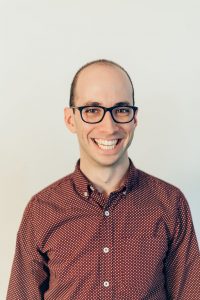
by Kim McCloskey | Aug 17, 2018 | About Storytelling
 Blending traditional mountain folklore with music and the contemporary Appalachia, Adam Booth’s approach to storytelling tickles the funny bone and tugs at heart strings. With myriad appearances at a host of storytelling festivals and events (including the National Storytelling Festival), and a plenty of awards to adorn his biography and proverbial trophy case (such as four Storytelling World Awards and Honors), Adam not only tells stories, but also teaches Appalachian Studies at Shepherd University, and is the founding director of the Speak Story Series. Oh, and let’s not forget his four championship wins at the West Virginia Liar’s Contest (makes you think about his accolades, doesn’t it?).
Blending traditional mountain folklore with music and the contemporary Appalachia, Adam Booth’s approach to storytelling tickles the funny bone and tugs at heart strings. With myriad appearances at a host of storytelling festivals and events (including the National Storytelling Festival), and a plenty of awards to adorn his biography and proverbial trophy case (such as four Storytelling World Awards and Honors), Adam not only tells stories, but also teaches Appalachian Studies at Shepherd University, and is the founding director of the Speak Story Series. Oh, and let’s not forget his four championship wins at the West Virginia Liar’s Contest (makes you think about his accolades, doesn’t it?).
Before the Timpanogos Storytelling Festival gets underway, get to know Adam Booth better by taking a look at this exclusive interview we were privileged to have with him. While it’s true that he is an amazing liar, his insight is deep and his experiences inspiring. We’re pleased to be able to let you in on some of his thoughts on storytelling, life, and more. Ladies and gentlemen—Adam Booth.
Q&A with Adam Booth
Our theme this year is “Pathway to Story.” How would you describe your pathway to becoming a storyteller. Was it a road, a back alley, a fast track, or a meandering trail?
I would call my pathway a forest trail that meanders up and down through the woods, over the springs, and around the rocks, with some difficult climbs, beautiful overlooks, and plenty of good company in the fellow hikers on the way.
Could you tell us about someone who has influenced you on this journey as a storyteller?
In 2011 I received the NSN J. J. Reneaux Mentorship Grant to begin a mentoring relationship with Dovie Thomason. This was a major step for me as a teller and I feel like I experienced tremendous growth in the years immediately following. Even though the grant was for one year, we have continued our relationship. Dovie has been along my journey ever since then, and I am excited to share the stage with her at Timpanogos. This will be the very first time we have told at an event together.
What are you passionate about outside of storytelling?
I am an advocate for correcting perceptions of Appalachia and Appalachians, which actually comes through a lot of my storytelling. I’m also passionate about youth education. Again, this is very much part of my work, so, perhaps those doesn’t count. I enjoy hiking and camping wherever I go, but especially in the West Virginia hills.
Where does storytelling go from here? How do you see it’s influence on society?
Storytelling is a hot word right now and we see and hear it combined with other media and processes, such as storytelling and health, or storytelling and community building. From here we work to see a greater general understanding of storytelling and how it touches all disciplines, not just as a hyphenated addition.
What fictional place would you most like to visit?
Mr. Roger’s Neighborhood.
http://www.adam-booth.com/
Thanks Adam! To see him live at this year’s Timpanogos Storytelling Festival on September 6-8, 2018 at the Ashton Gardens at Thanksgiving Point in Lehi, Utah go the our website to buy tickets at https://timpfest.org/

 Kim Weitkamp is a crowd favorite at the Timpanogos Storytelling Festival for good reason. She peppers her stories with humor, tall tales, music, and wisdom. Not only is Kim an award winning storyteller, author, and speaker, but she also owns a design company, a record label, and has been involved in humanitarian work for the old and young alike. Talk about a busy woman! Well, we certainly appreciate Kim for taking the time to answer a few questions and guide us along her pathway to story.
Kim Weitkamp is a crowd favorite at the Timpanogos Storytelling Festival for good reason. She peppers her stories with humor, tall tales, music, and wisdom. Not only is Kim an award winning storyteller, author, and speaker, but she also owns a design company, a record label, and has been involved in humanitarian work for the old and young alike. Talk about a busy woman! Well, we certainly appreciate Kim for taking the time to answer a few questions and guide us along her pathway to story.







